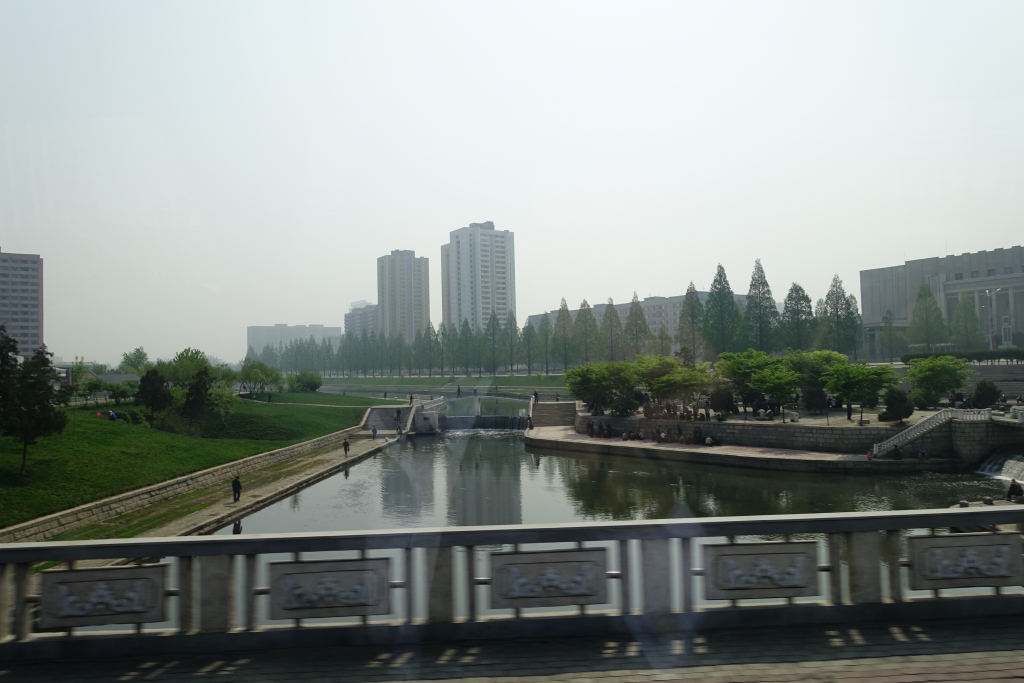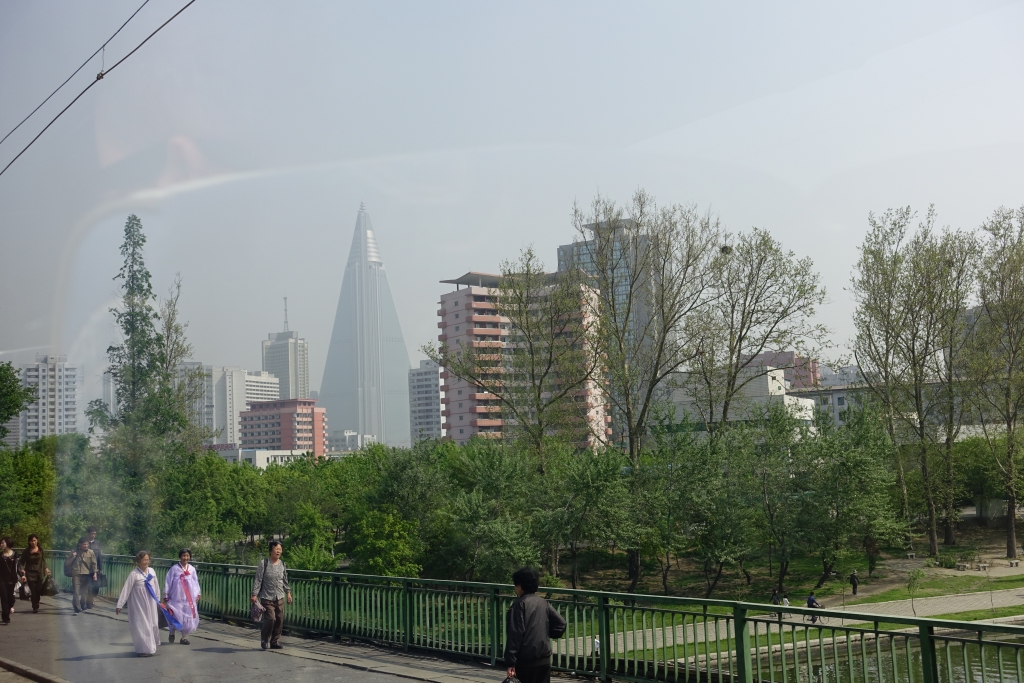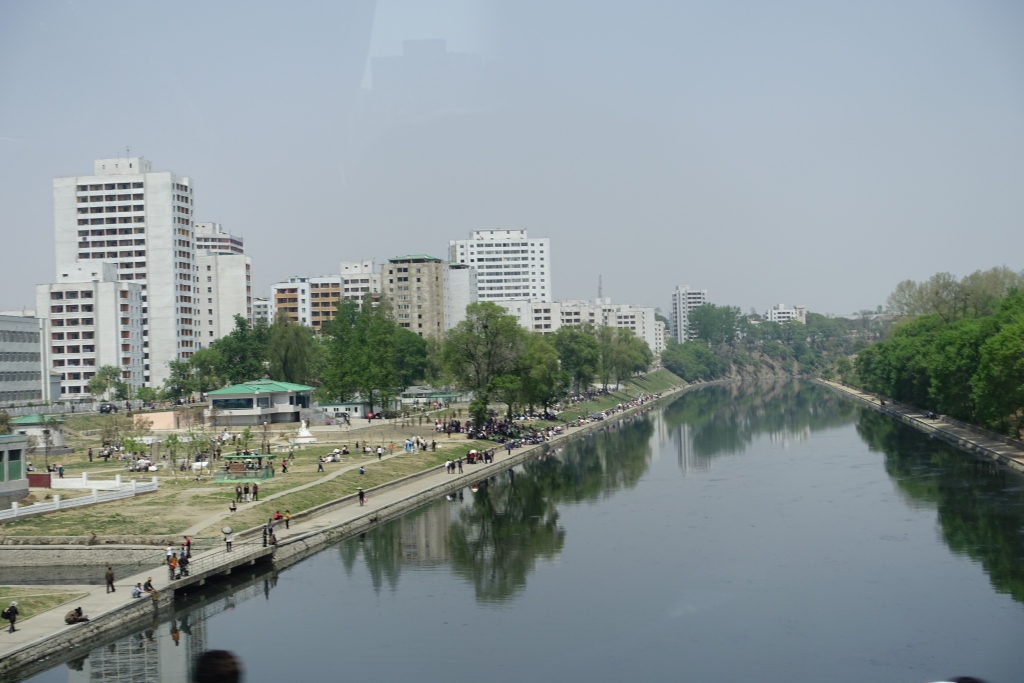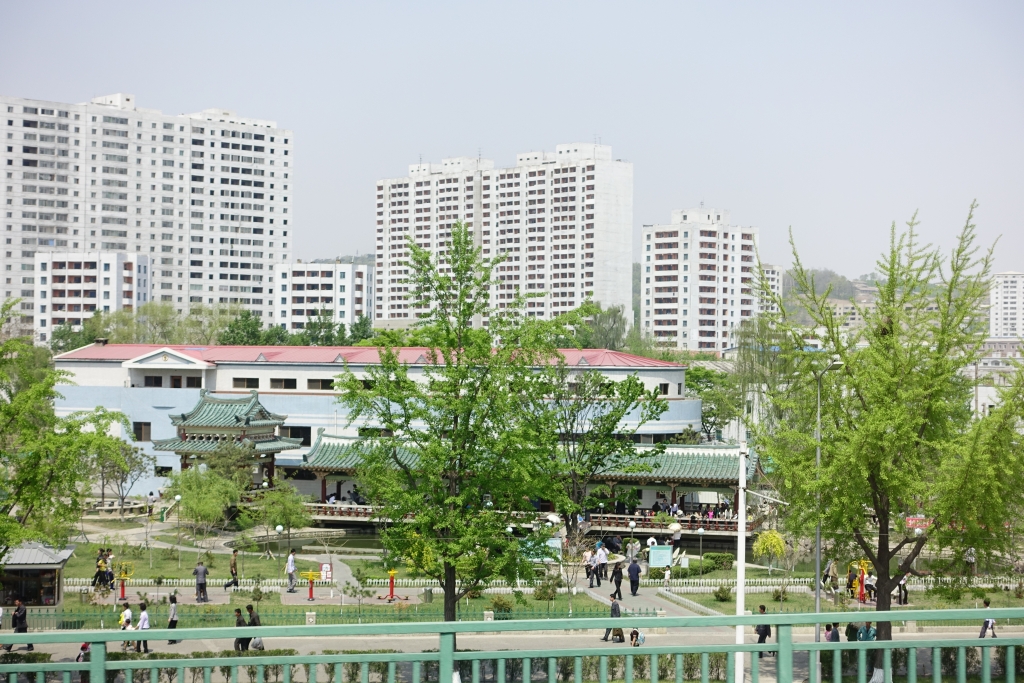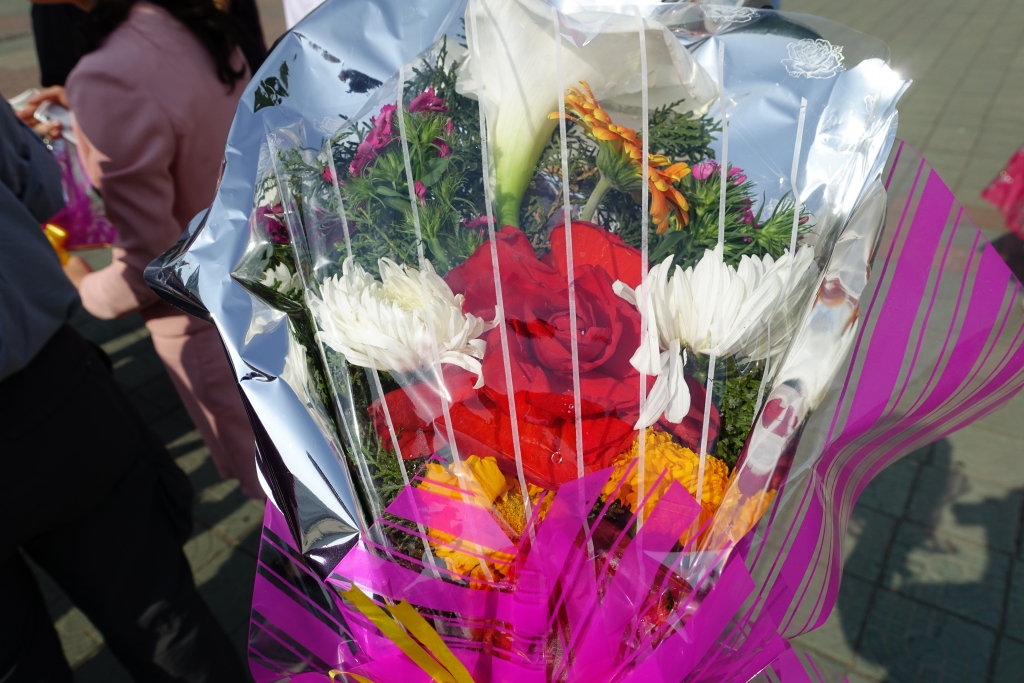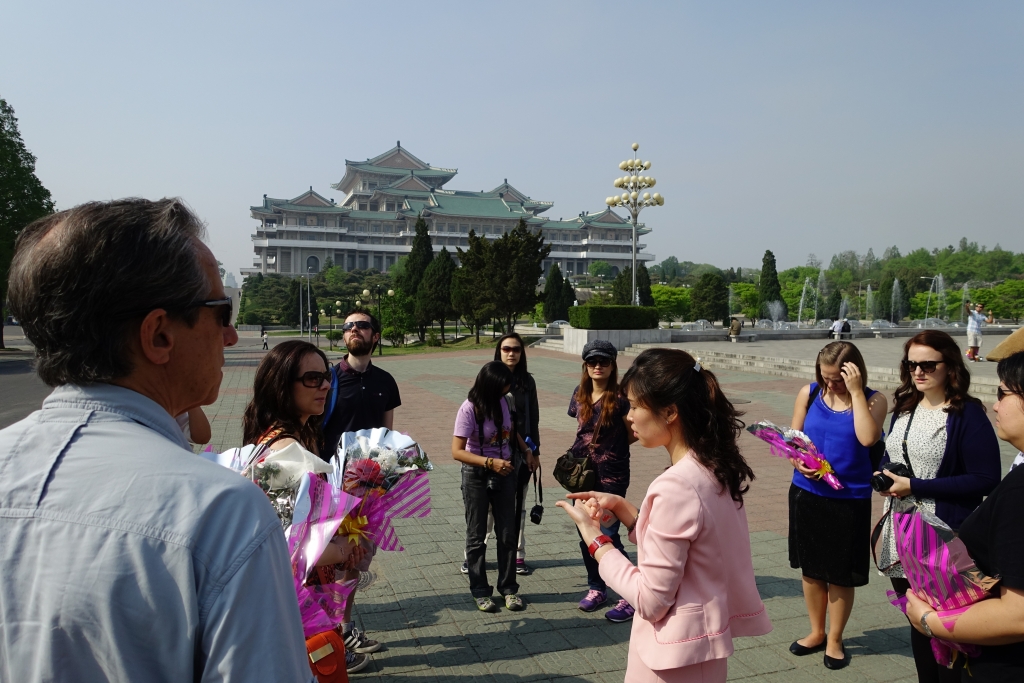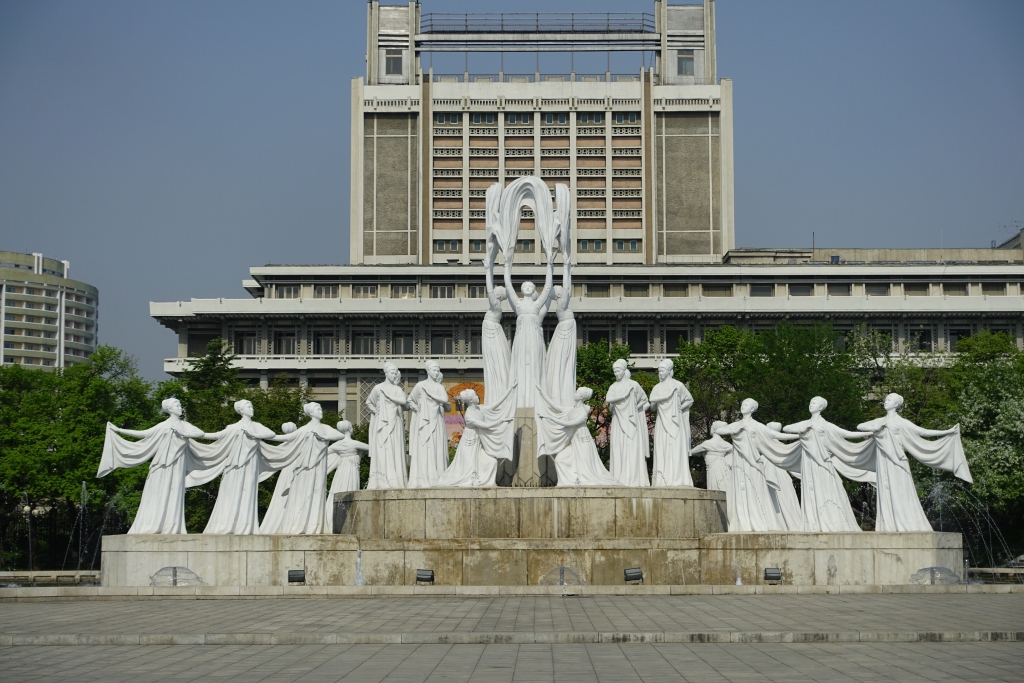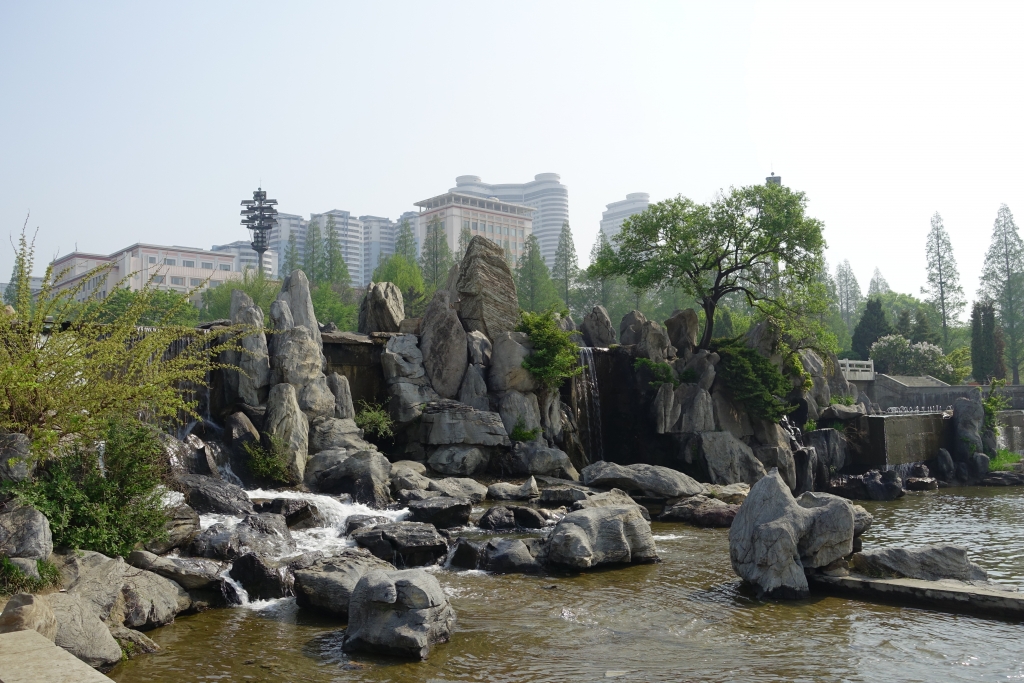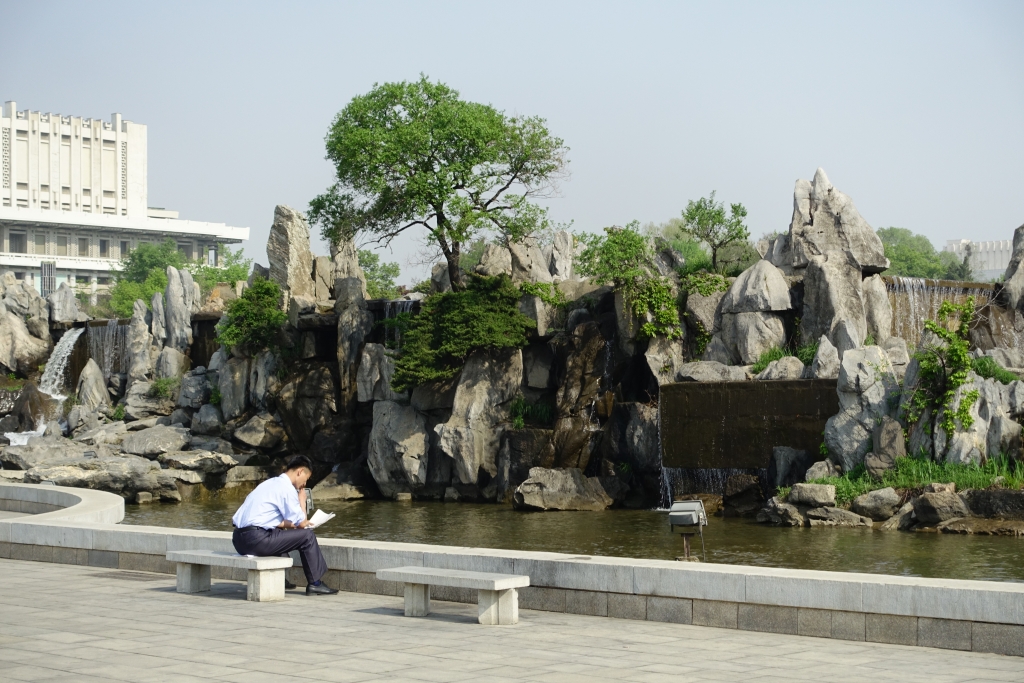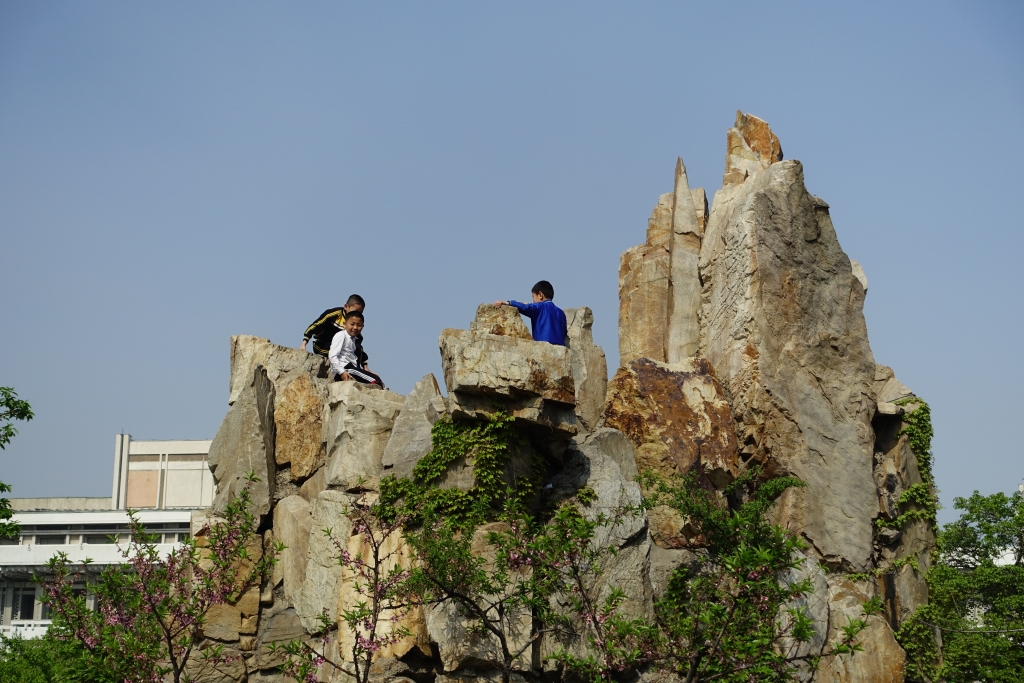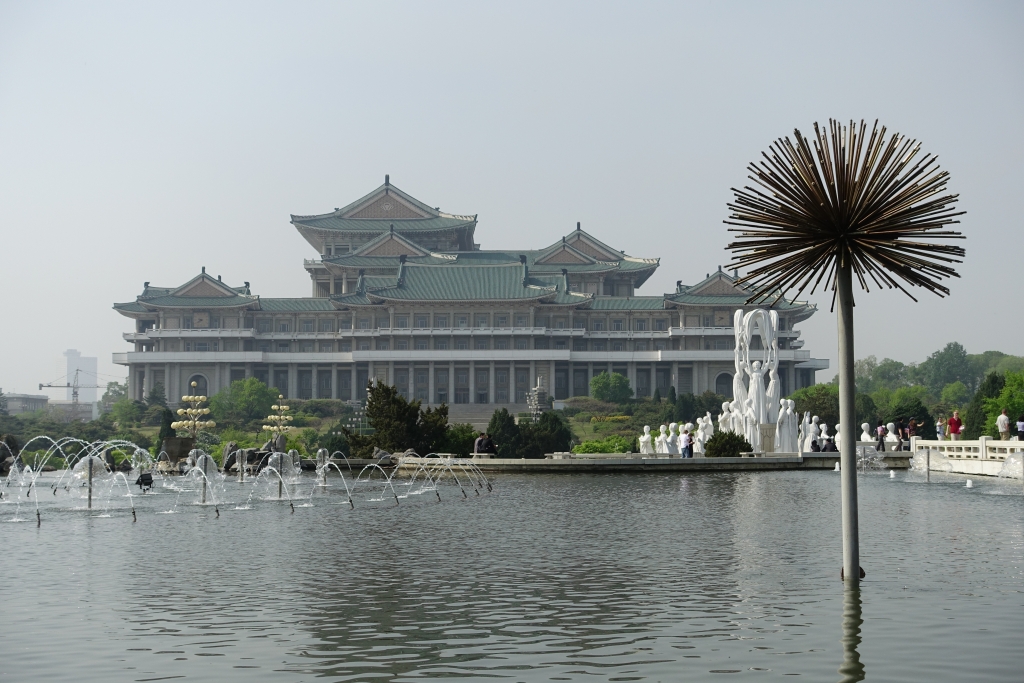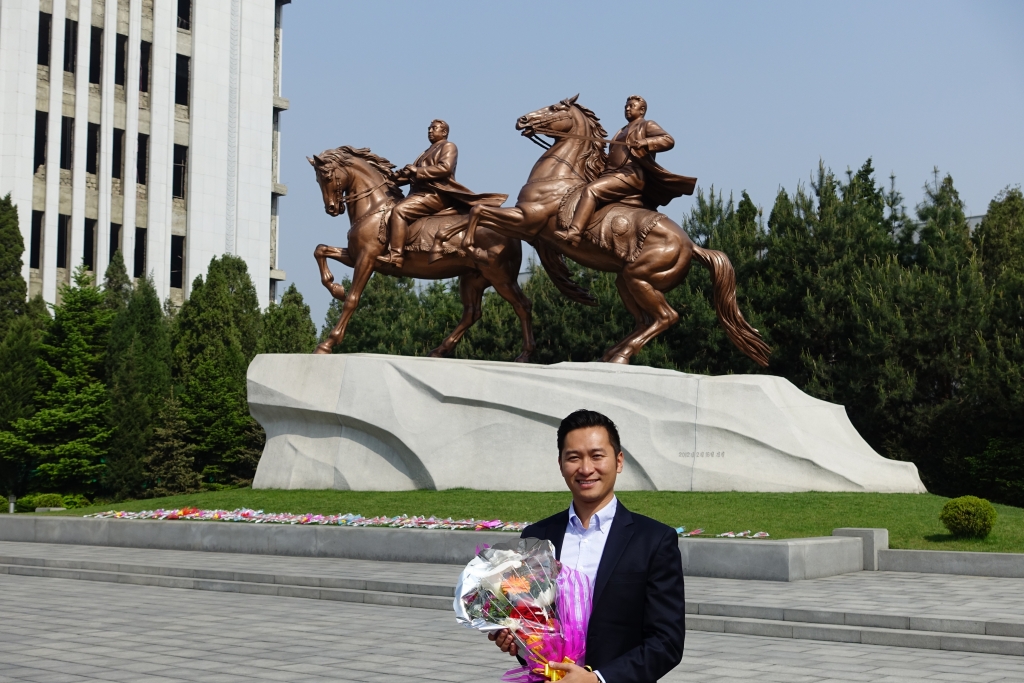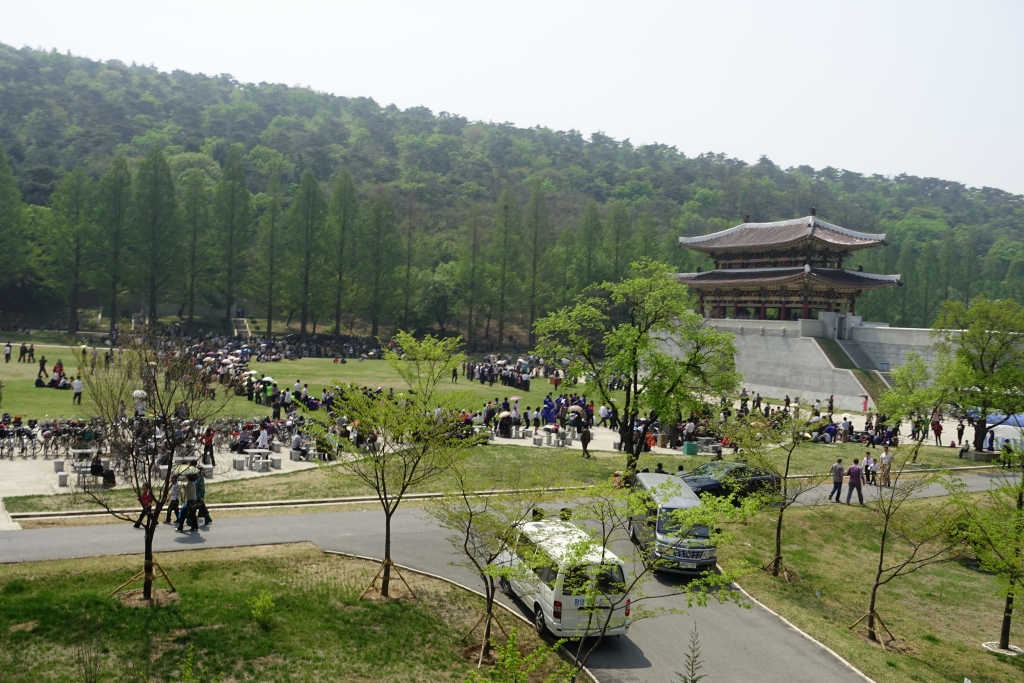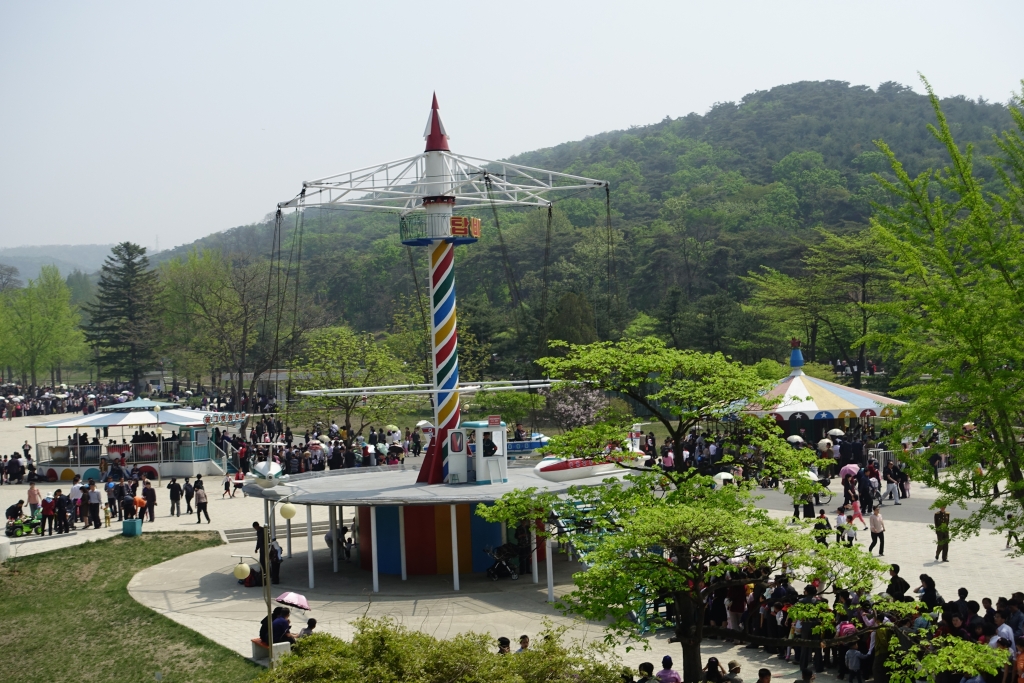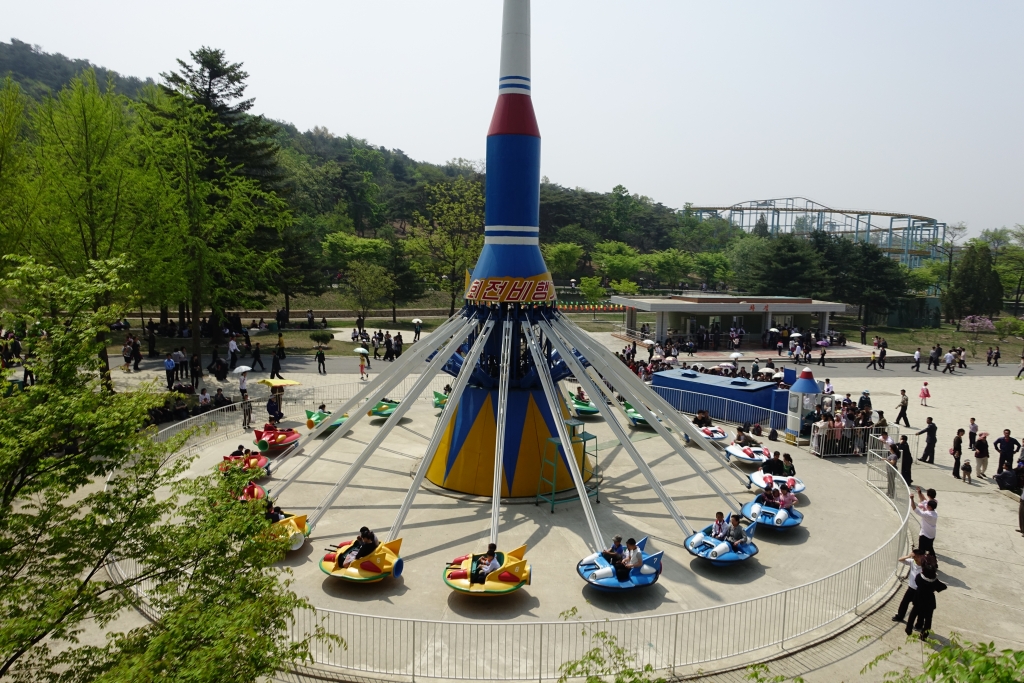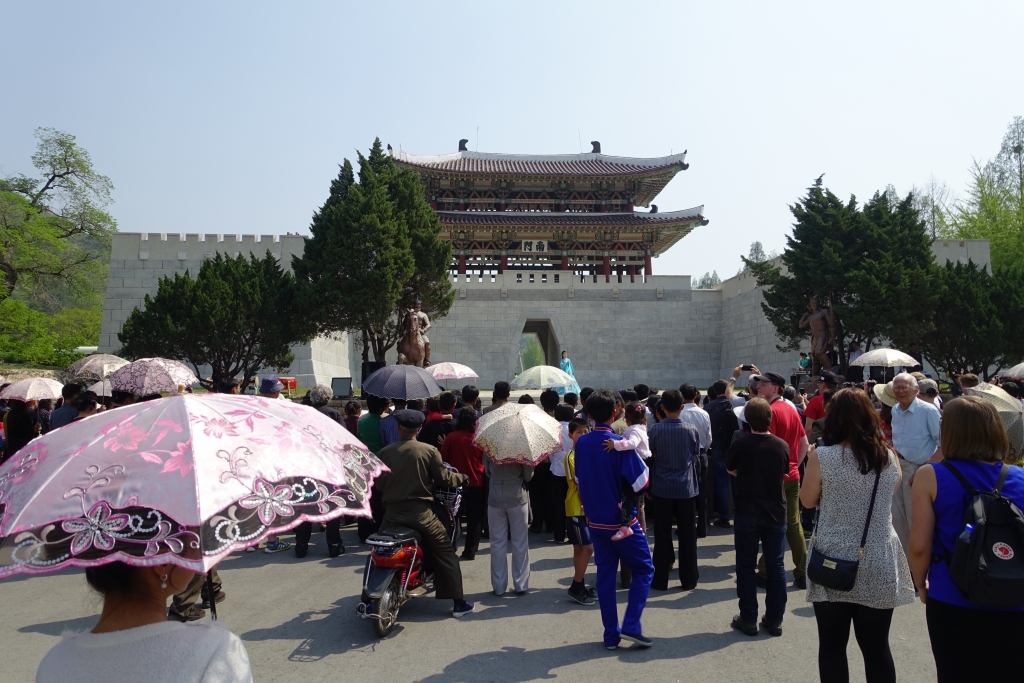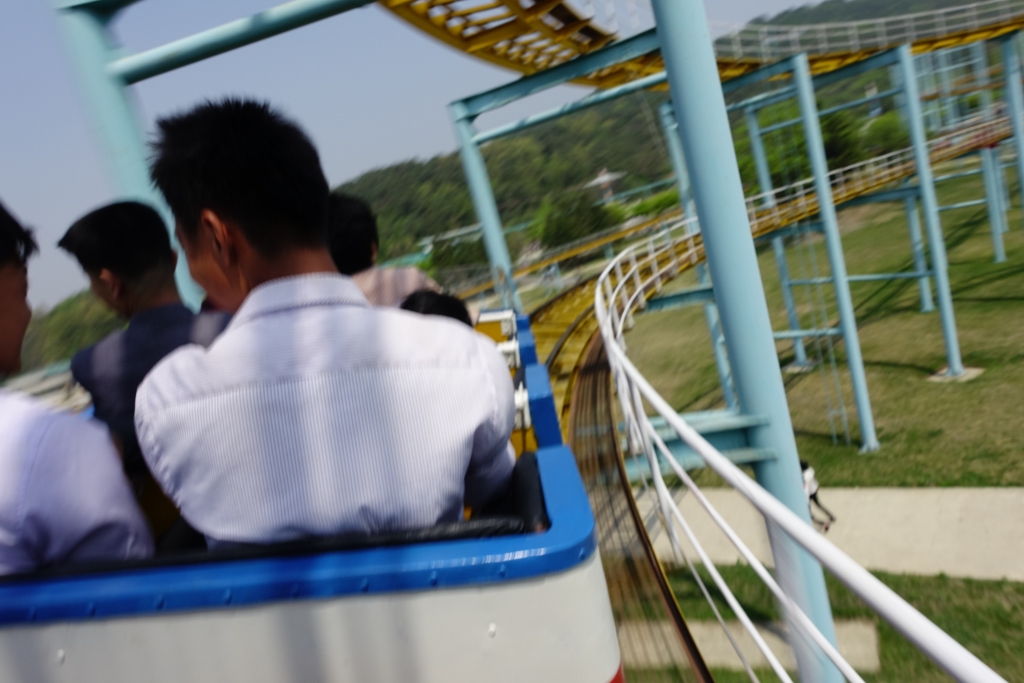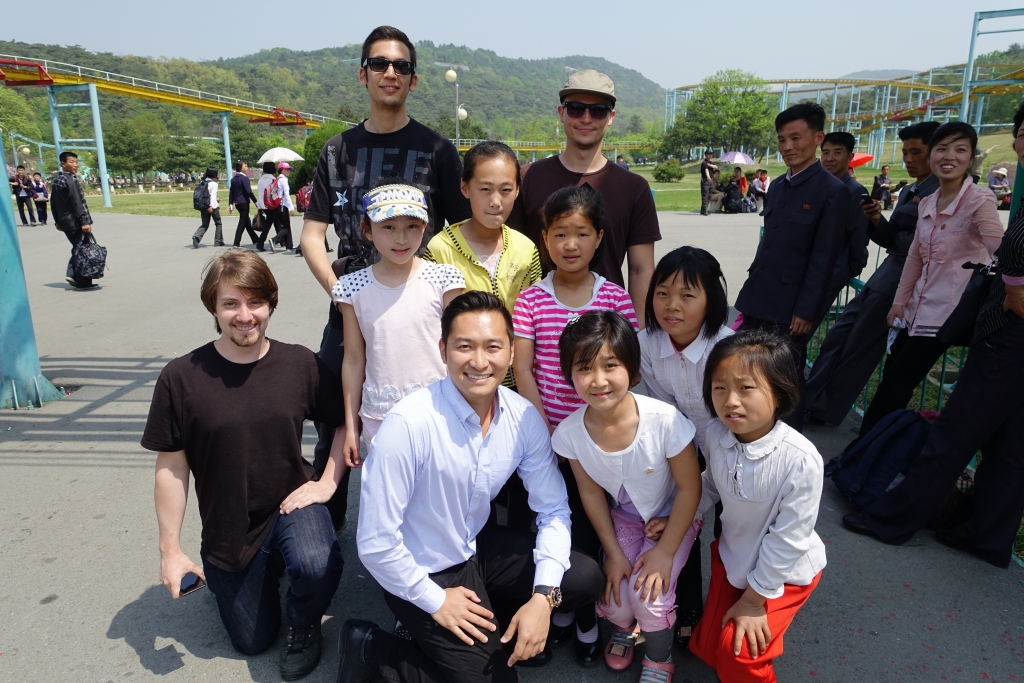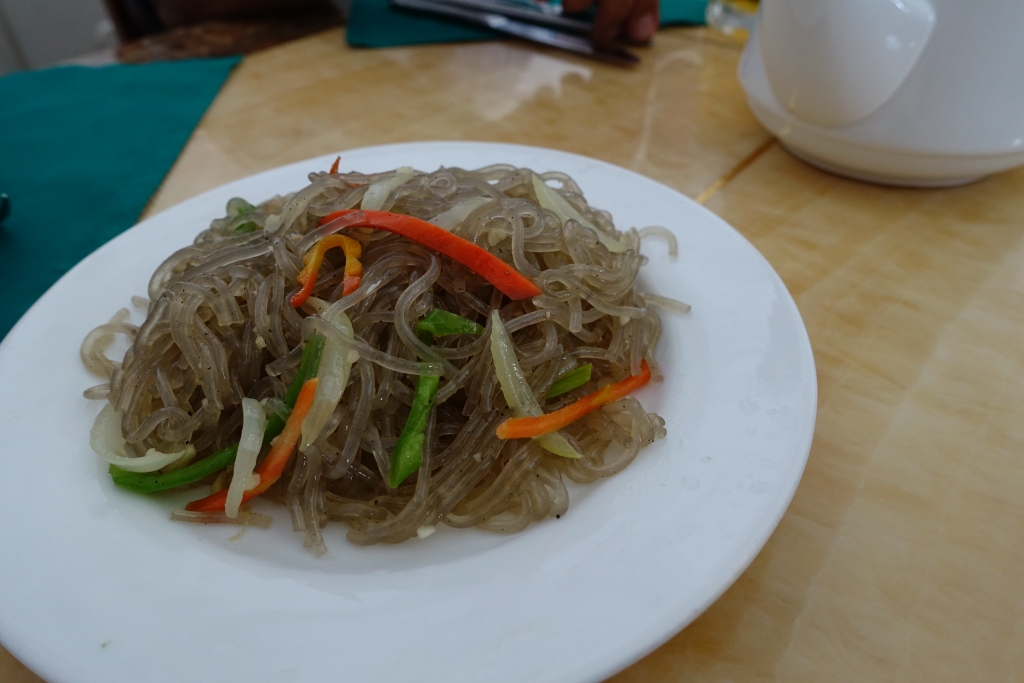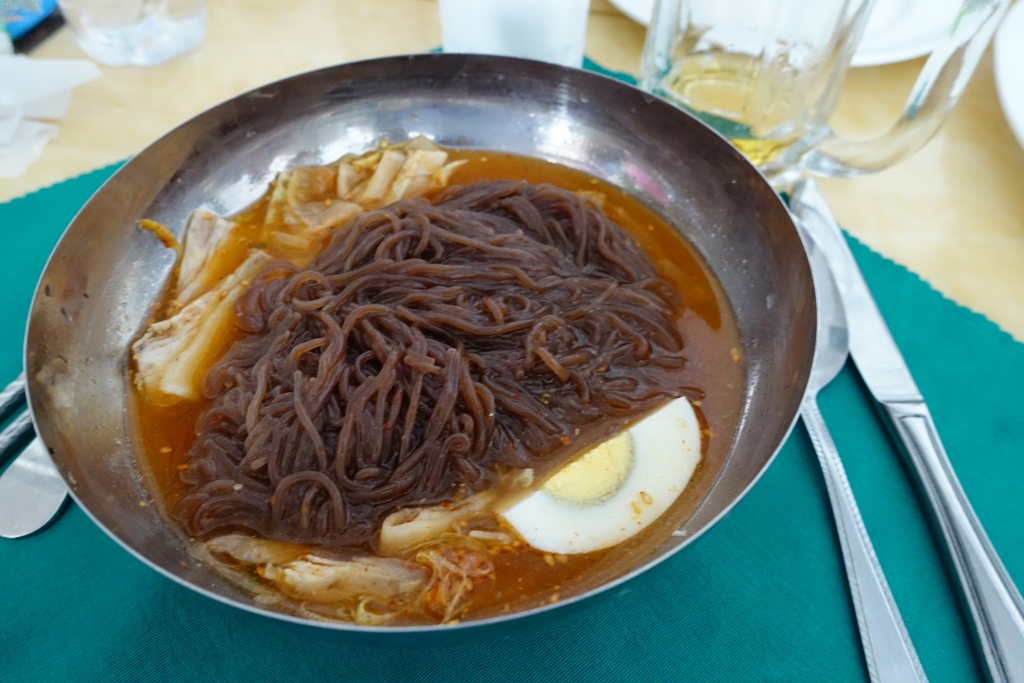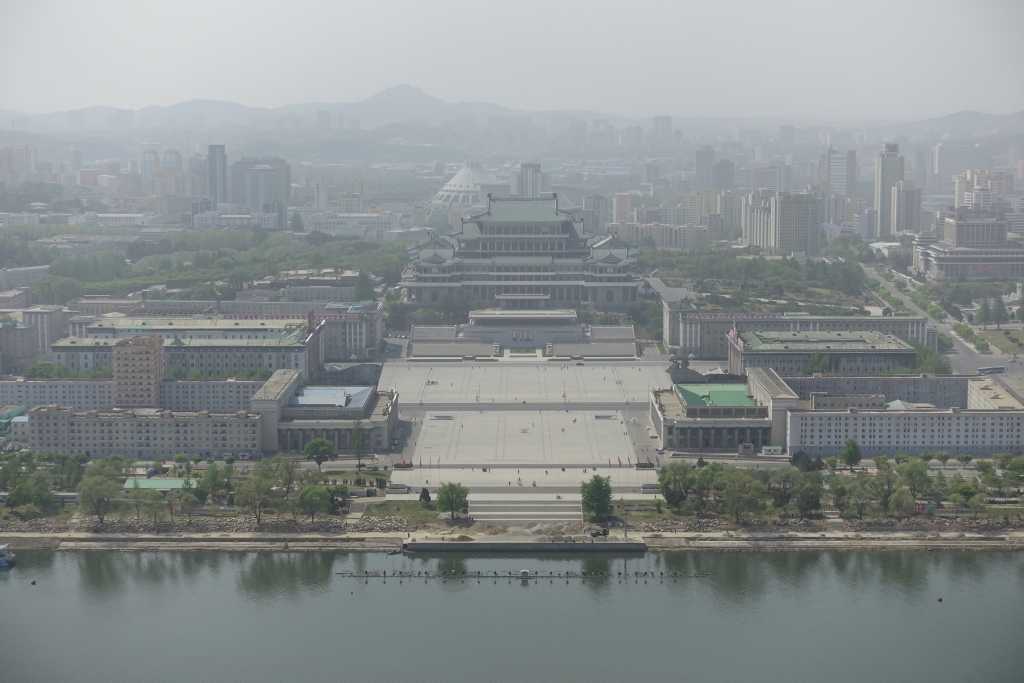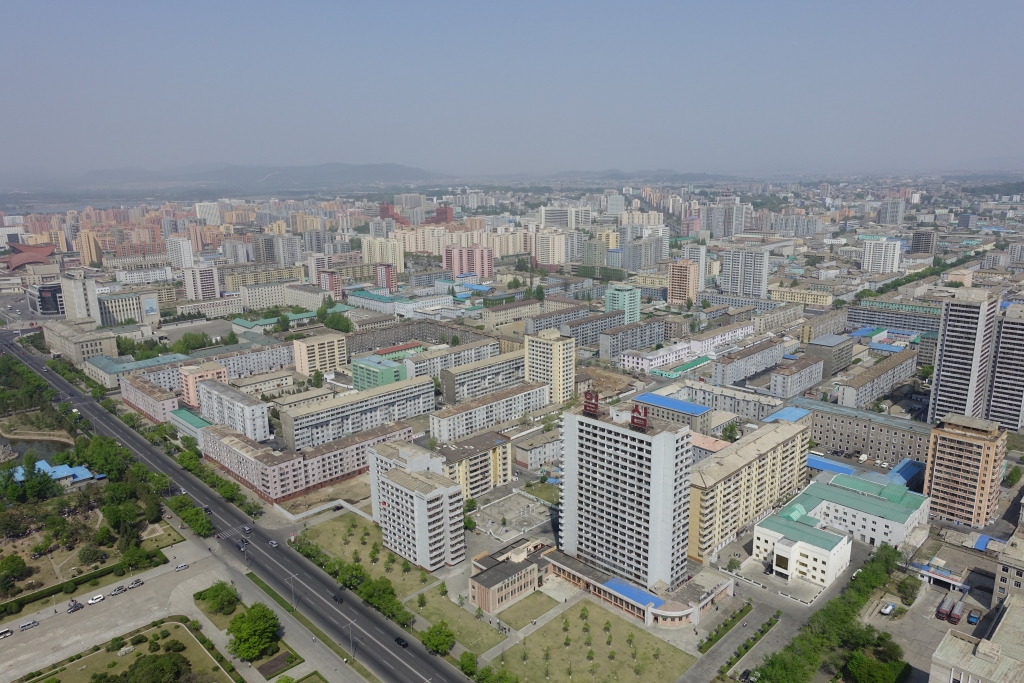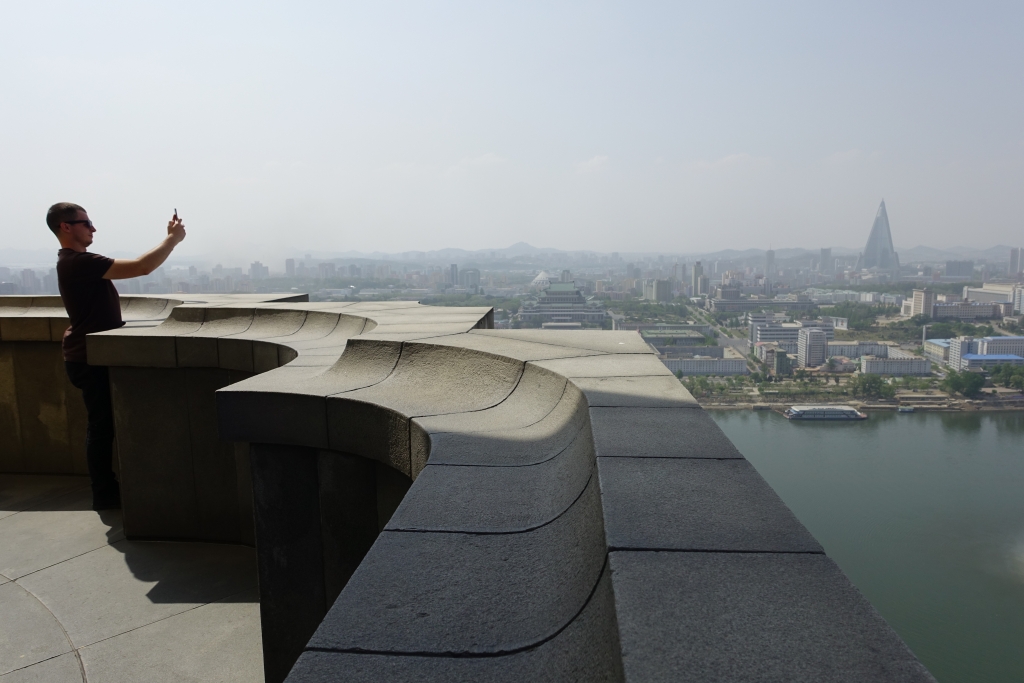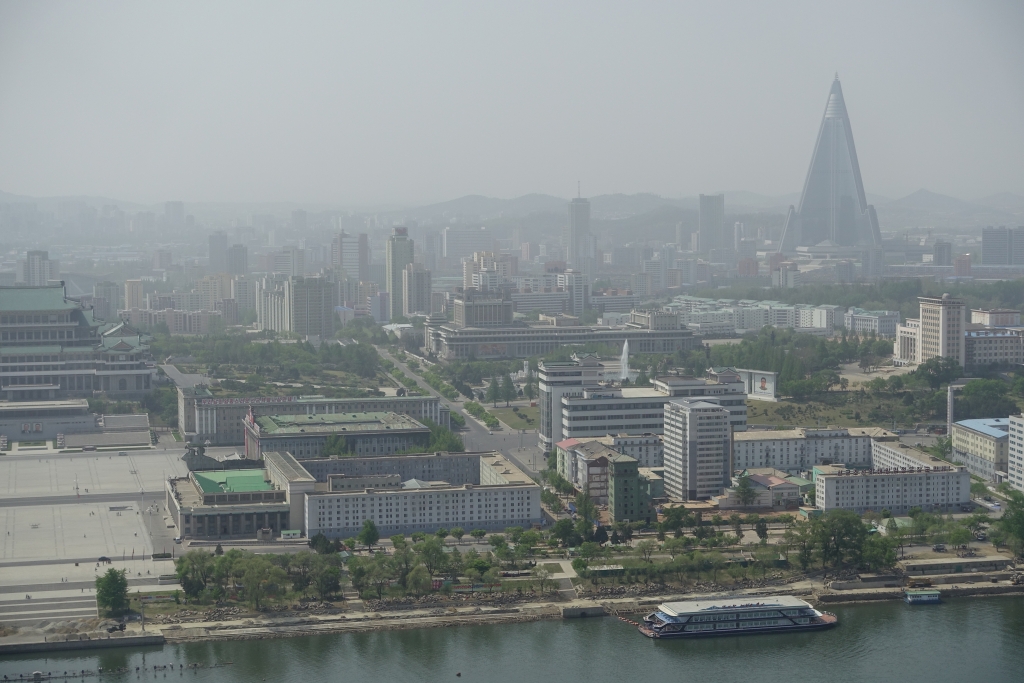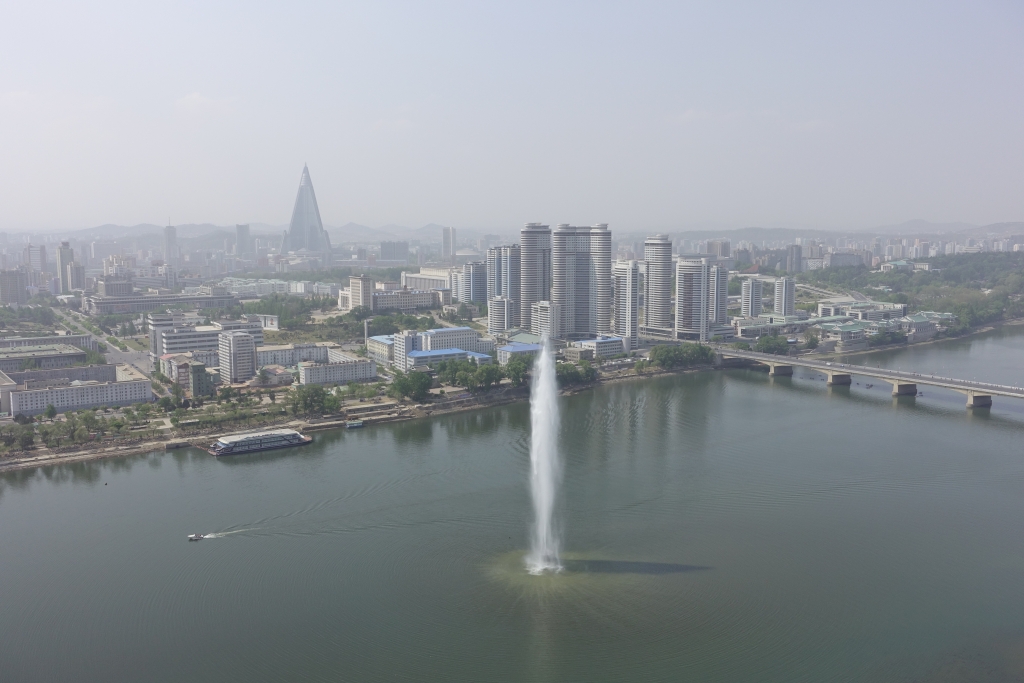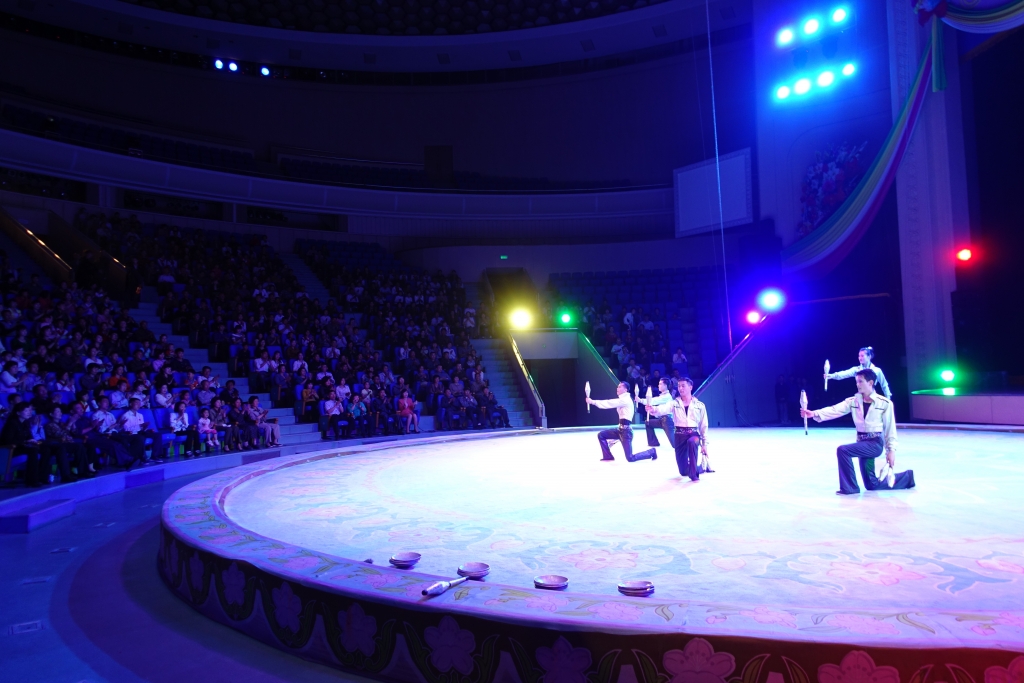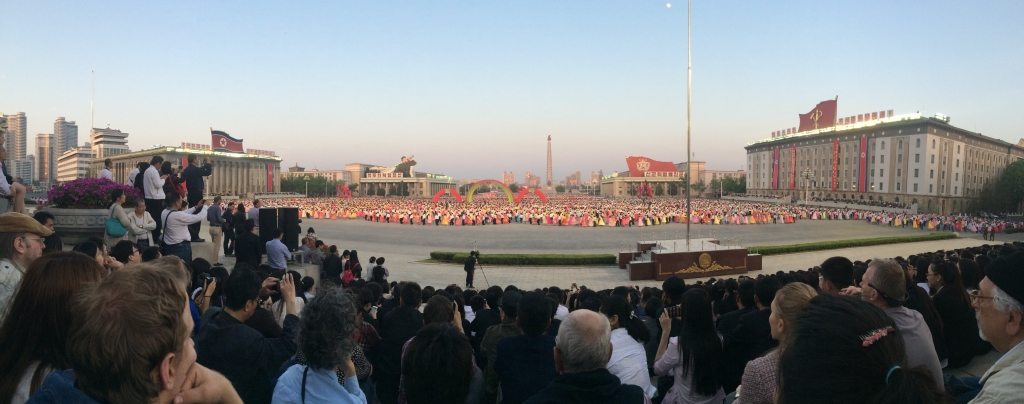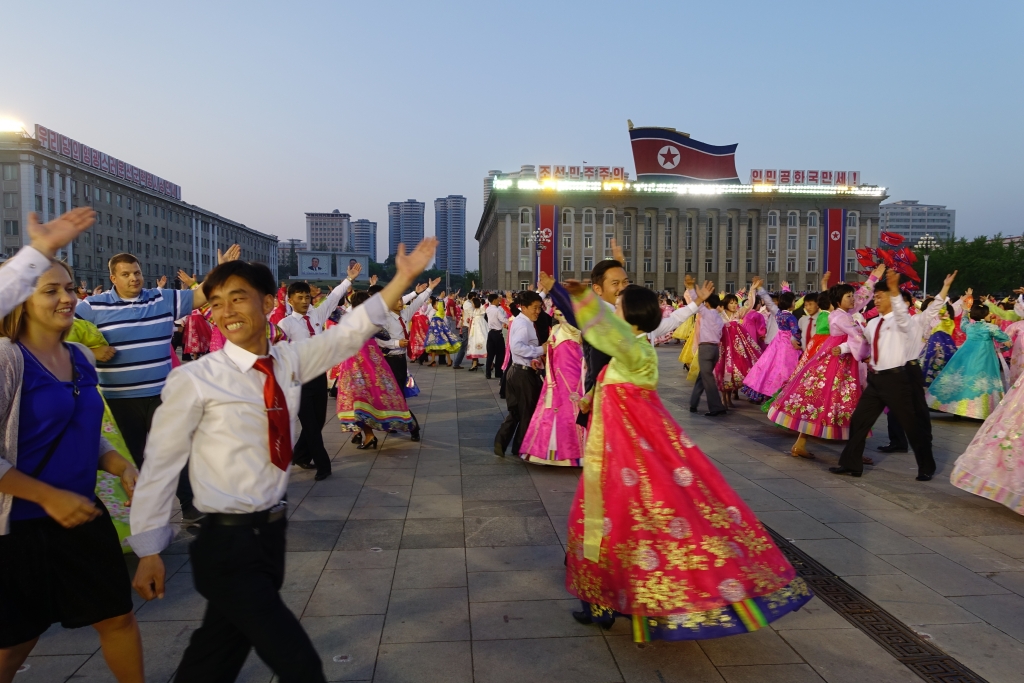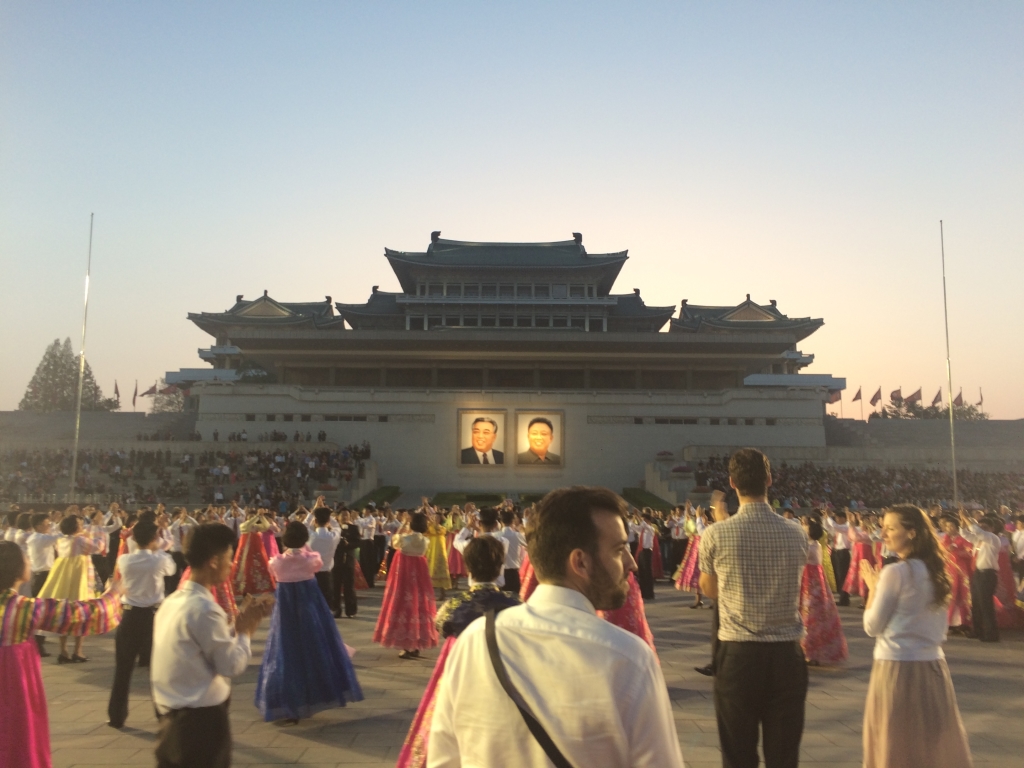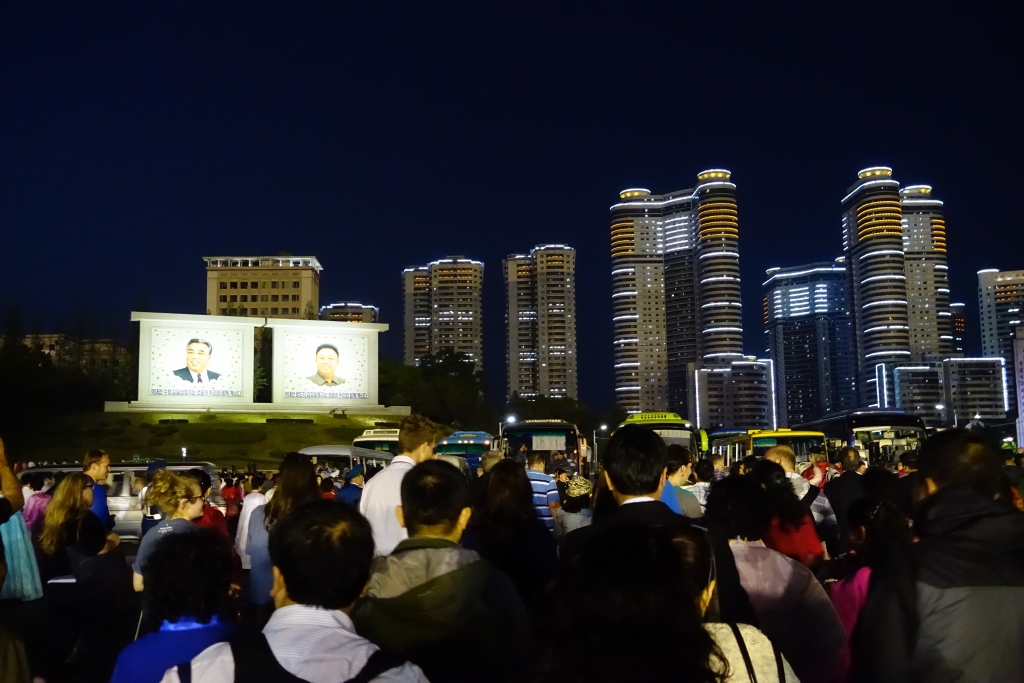Waking up in North Korea’s capital city Pyongyang is a little different from what I’ve gotten used to. I’ve been traveling around the world for six months now, and, unlike most major cities in the world, Pyongyang is eerily quiet in the morning. There are few cars, and the people walking on the street don’t seem to talk very loud, if at all. We were staying at the Pyongyang Koryo Hotel, supposedly one of the best in the city. It was May Day (May 1st), one of the biggest national holidays in the country.
Navigation:
I didn’t need my alarm today because the curtains were so damn thin that the sun was shining in my eyes well before my alarm went off. By the way, a word of advice at this point if you’re planning to visit: the tap water in Pyongyang should not be used for drinking, so stock up on water bottles before you go to your room because, unlike most hotels in other Asian cities, they will not provide bottled water here.
I took a quick shower and got ready before heading down for breakfast. The shower water was lukewarm at best, but fortunately my room was also quite warm because setting the thermostat changes nothing. After the shower, I dried myself off with the “towel.” I place quotation marks around it because I believe that towels are meant to absorb water. This piece of cloth, which was about the same thickness as my t-shirt, had just one thing to do, and it was miserable at it.
Breakfast was nothing to write home about: buffet of eggs, toast, kimchi, three types of fizzy sugar liquid, squid, and yogurt. Moving on.
The first stop in the morning on the second day of the tour was one of the parks in the city. Apparently Pyongyang is known as the city of beautiful parks, and the numerous parks and lakes that we did drive past throughout the trip did indeed look very nice.
The park we were taken to had a statue of Korean dancers. At this park, we were able to buy some flowers that we would be taking to the statues of Kim Il-sung and Kim Jong-il at our next stop. Apparently the flower in the center of the bouquet was named Kimjongilia (after Kim Jong-il, of course). Interesting.
Unfortunately, the giant statutes nearby were under renovation, so we had to go to a smaller set of statues (which were still pretty large) in the artists’ community, where the artists in Pyongyang work all day to create art for the State. We left the flowers in front of the Kim statues.
While we were there, a fire broke out in one of the buildings behind the building where we were standing, as shown by thick, black smoke rising into the air and a bunch of people running towards the building. The guides ushered us back onto the bus and we were swiftly driven away to our next stop.
On the way there, we asked our guide some questions, and found out a bit more about what life is like in the country for normal citizens. The favorite dish of North Koreans is cold noodles, which is usually served with a tangy broth in a metal bowl with some vegetable slices. Before winter, they like to make a lot of kimchi for the year. Our guide’s family makes 150 kilograms of kimchi every year. That’s a lot of kimchi.
Regarding the usual marriage age: for men it’s between 26-31 years old, and for women it’s between 23-28. People usually meet each other at work, in their communities, in bars, or through friends. Usually, if they aren’t married after this, their friends and family will attempt to set them up. Most people have 2-3 kids.
All housing in North Korea is provided by the government, free of charge. After people get married, they will usually ask for housing from the Peoples’ Committee so that they can start their new family. North Koreans feel a lot of pressure by their parents and grandparents to have babies soon after they’re married. When a woman has a baby, they generally get 150 days of maternity leave from work.
After a baby is born, the mother and child will not accept outside visitors for 100 days. The logic behind this is that they do not want the baby, whose immune system is still not strong, to get sick from other people. After 100 days, the family will invite their closest friends for a small party. On the child’s first birthday, they’ll invite many more people and have a huge celebration.
If someone has triplets or quadruplets, it is supposed to be good fortune for the country. The state will take care of the children (and take on all related expenses) until they are 7 years old, after which they are returned to the care of their families.
As our guide Ms. Pang finished explaining about life in Pyongyang, the bus pulled into a giant fair, we could see thousands of North Koreans walking around the fairgrounds. When we got there, there were already tons of people on roller coasters, playing volleyball (a popular sport in the country), watching performances, and enjoying ice cream. All of the other tour groups in the city were also in attendance.
Here, we had the freedom to walk around anywhere and talk to and play with the locals. Of course, it looked like everyone at the fair was definitely in the upper or upper-middle class of the city. Unfortunately, most of the people we tried to talk to didn’t speak any English, and we didn’t have any Korean speakers in our group. However, we saw a bunch of other tourists who were playing some of the competitive games and laughing with the locals.
One thing I noticed is that many women carried very elaborately decorated parasols to shield themselves from the sun. I’m assuming this is a status symbol of sorts.
Eventually, a few of us in the group decided to do one of the roller coasters. The workers set us straight to the front of the line and we got on with a bunch of elementary school girls, who were really happy and surprised to be sitting in the same roller coaster car as us. We tried to speak to them, and they tried to speak to us, but neither of us understood each other. Instead, we exchanged smiles and waves and a sense of impending doom on this rickety, early-1900’s-era, questionably constructed roller coaster.
Luckily, we survived, and when we got down from the roller coaster, we asked them to take a picture with us, which they gladly obliged. After they picture, we shared a long goodbye wave as they walked away with their parents. It was time to get back on the bus to go to lunch.
The lack of air conditioning in the restaurant was noticeable, but fortunately the heat was not unbearable that day. This time around, the food served at lunch was not too bad. Except for the very strange, Korean-tasting hot dogs.
After lunch, it was time to head to the Tower of the Juche Ideal, the tallest stone tower in the world. Lights are placed on top of the tower so that it looks like a flame is coming out of the top at night. We went to the top (costs 5 euros), which was well worth it. From the top of the tower, we could see all of Pyongyang, which was a breathtaking sight.
The large pyramid building is the Ryugyong Hotel, the largest hotel in the world. Construction of the hotel started in 1987, and only two years ago was the exterior completed. The interior is still unfinished.
Behind the tower, two gigantic pumps toss water into the air higher than the surrounding buildings. It’s an unreal sight.
After the tower, we headed to the circus to watch some live acts. There were a ton of really amazing stunts, with performers flinging each other many feet into the air, swinging from ropes, flying off of catapults, and throwing and catching each other. It was actually quite stressful for me because, the entire time, I was hoping no one would mess up and die. I captured a photo before they told us to stop taking photos.
When the carnival ended, we went back to the hotel to freshen up and get ready for the Mass Dance celebration (of which we had seen the preview the previous day) in Kim Il-sung Square. This is what everyone had anticipated all day, and we were definitely not let down.
When we arrived at Kim Il-sung Square, it was already packed with both tourists and locals. We found an empty spot for our group to watch from. As the sun began to set, the music started and the thousands of dancers moved in amazing unity. We were all in awe at the sight in front of us.
After three songs, all the foreigners were invited to join the locals and learn the dances. Most of the attending tourists swarmed the square, and we were greeted by guides that pulled us in to dance with locals.
The locals taught us the moves, and after a few rounds, most of the people had learned the dances. They were relatively simple 4- or 6-count dances with moves that weren’t too hard to learn. Overall, there were probably only 5 or 6 different dances that repeated. Once we learned the dances, it was actually a lot of fun, and we had a fantastic time being part of the celebrations.
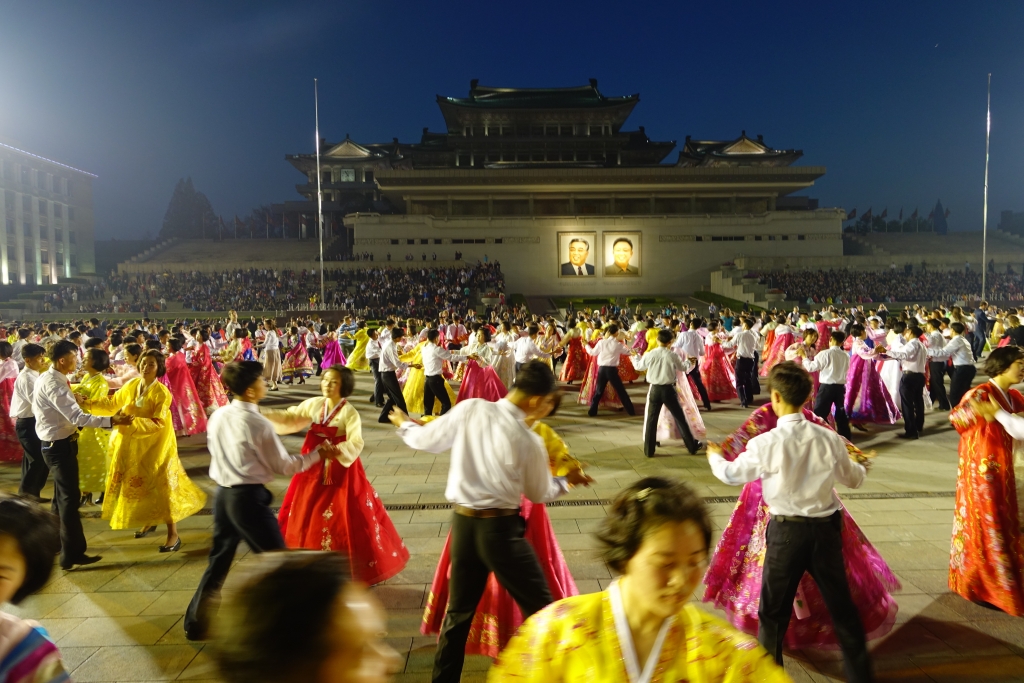
As the last of the lingering sunlight slowly vanished behind the surrounding buildings, the square was lit by bright lights. As I stood in the center of one of the dance groups, the colors of the dresses spun and flowed all around me. It was truly a sight to behold and an unforgettable moment.
Finally, the music ended and we all said a giant thank you to our new friends before parting. All of us in the tour group could not contain our excitement about what we had just had the opportunity to be a part of. As we headed towards the buses through the throngs of people also leaving, we could see the faces of the past Dear Leaders, brightly lit, watching over everyone.
We boarded our bus and headed towards the Diplomat Club for dinner. It was a large dinner with a number of meat and fish dishes, as well as beer. I was too hungry to take photos.
After we got back to our hotel rooms, I stared out of my window for about 15 minutes. It was dead silent at 10:30pm. In that span of time, I saw one car pass by and maybe 2-3 people walking around. I also saw what looked like two people in a bushy tree area with flashlights seemingly searching for something in that area.
We weren’t allowed to leave the hotel, so I took a nice long bath in the bathtub (the water got hotter this time), did some reading, and climbed into bed. It was a long, packed, tiring, fun day, and I was excited to learn more the next day.
